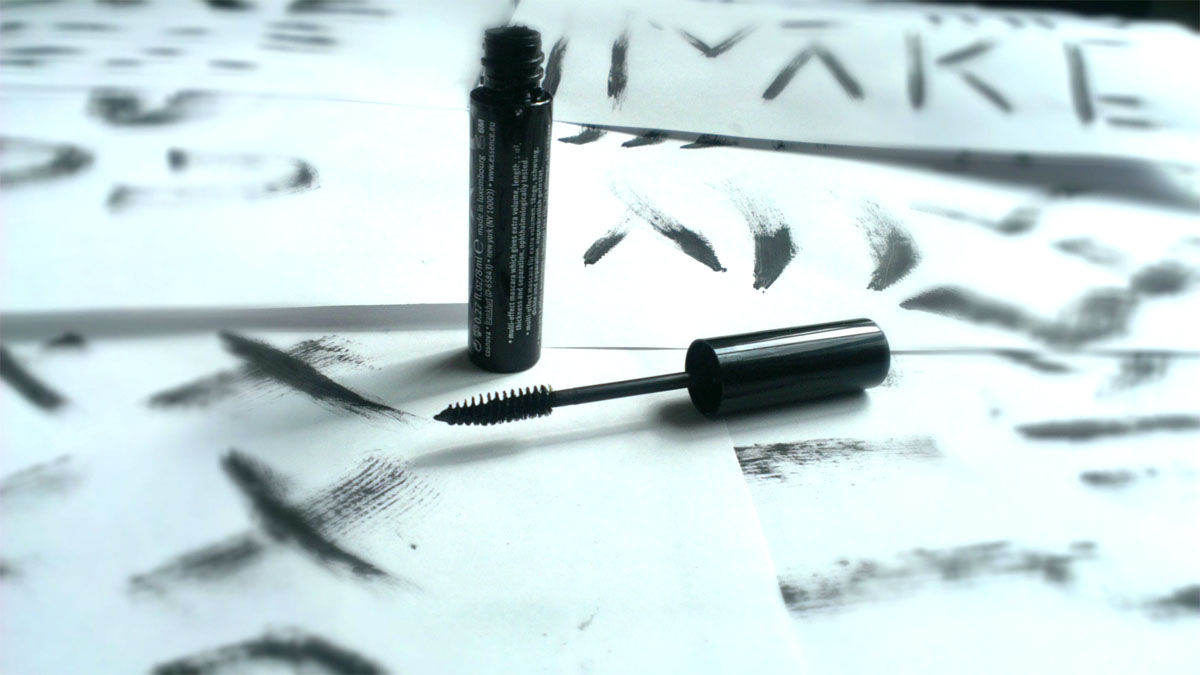11 Tips for painting – regularly apply white paint on the wall.
Painting walls and ceilings white is not only asked when moving in or out, because sometimes rooms just need a fresh coat of white paint. This may not sound difficult at first, because to paint white on white can now really not be so difficult. However, it’s not as easy as you might think, and there’s a lot to keep in mind when it comes to white paint, too.
Tips & Tricks – Painting with white paint
Even white paint can be stained and not only if you paint over another color. To make the white walls beautiful and even there are tips to follow to make painting a success. Tips on wallpapering can be found here: ‘How to wallpaper properly’.
Tip 1 – Calculate the ink consumption
Before you start painting, you should first find out how much paint you need to paint the desired area. So that you don’t run out of paint in the middle of painting or have buckets of paint left over, you should measure exactly. There is a simple rule of thumb for this. You calculate the length times the width and multiply the result by the consumption per square meter (is noted on the paint bucket). For example, it looks like this:
4 m x 5 m = 20 sqm
20 sqm x 150 ml/sqm = 3000 ml = 3 litres
You can calculate with this guide value and plan accordingly much paint. Note, however, that the guide values on paint buckets refer to a smooth surface. With woodchip and textured wallpaper, the surface area increases and so does your consumption. Calculate a flat rate of 20 percent more paint, because you prefer to have a little over at the end than to have too little paint.
One factor that is often forgotten is the ceiling. Most do not calculate the area from the beginning, because the effort would then really be too great. However, it is often only when painting and in direct comparison that you notice that the ceiling has a gray haze. The contrast between the wall and the ceiling then suddenly looks completely different and you also have to paint the ceiling. So before buying paint, test whether the ceiling also needs a new coat of paint or not. If this is the case, also include the ceiling area with the formula given, as paint is also used here. Always start by painting the ceiling and then work your way along the walls so that any splashes from painting the ceiling can still be wiped off and do not destroy the fresh paint.
Tip 2 – get all the tools
Of course, before you can start painting, you need to go buy all the utensils. The most important thing is the paint. Because not all white paint is just white paint. There are some differences here as well. Here it comes down to opacity, coverage and wet abrasion resistance. It is important that you really should not save money on paint. The price-performance ratio should be reasonable, but some indicators should have the paint. Ideally, reach for the paint bucket with a high opacity class 1, as this has a high proportion of white pigments. Cheaper rides have less of these pigments, which leads to the fact that they have to paint two or three times. Logically, this infers higher consumption and therefore higher cost. As you can see, it pays to go straight for the higher quality paint bucket. The second quality criterion you should pay attention to is the wet abrasion resistance. This indicates how resistant the paint is to mechanical abrasion. This includes, for example, deviation. Here again, class 1 is the best and represents a real quality criterion.
But what else do you need? Here is the checklist for your shopping at the hardware store:
- Good and high quality wall paint in white (or the desired color)
- Protective materials for covering, such as masking film and masking tape
- A paint roller suitable for the substrate (one for each helper)
- Brush or corner roller for corners and edges
- Stirring rod for mixing the paint (a wooden stick will do)
- Telescopic rod, for higher walls or ceilings
- Scraper grid and paint tray
other helpful utensils that you should find in your household:
- Old, clean preserving jars to store leftover paint
- Sponge or brush to remove dirt from the wall
- Ladder or third board
- Damp cloth to be able to remove paint splashes
- Old clothes that you can wear for painting
- Plastic bag to be able to pack the paint rolls
Tip 3 – prepare your work surface
Once all the utensils are purchased, you should consider the nature of the walls to be painted. After all, not every surface is the same and there are different things to consider. First of all, the surface should always be solid, dry and not chalky. If this is not the case, make sure it is by removing old paint or possibly removing any existing wallpaper. So if your substrate is in the right condition, remove any nails, screws and wall plugs you no longer need from the wall and fill any existing holes with putty. Cracks in the wall should also be scraped up, brushed out and filled. You can recognize chalky surfaces if you run your hand over the wall and a chalky abrasion remains on your hand. If this is the case, rub the surface with a damp sponge. For uneven substrates, it is generally recommended to apply a primer coat before applying the actual paint, otherwise the substrate will reduce the binder and the paint will lose strength. So if the substrate is well prepared, it should also be clean. Typical renovation marks are sawdust or gypsum particles but on an older woodchip wallpaper some dust collects over the years which can cause black spots when painting, as well as cobwebs which should be removed beforehand. Protect yourself against such mishaps by wiping the wall with a clean or new broom and remove these remnants.
Tip 4 – Tape off everything incl. sockets & door frames
The last step before painting can begin is masking. This will not only protect your floor, but also your furniture. To do this, use the foil you bought at the hardware store and bother it with masking tape. Go along the baseboard and attach the film here with masking tape once in the entire room. Furniture is best placed in the middle of the room, over which you can then throw another piece of foil. But also door and window frames should be taped thoroughly, so that no paint gets lost there. Think in this course but also sockets and light switches. These should also be taped with masking tape or removed completely. But you have to be careful here. When you remove the sockets and light switches, first switch off the power by removing the fuse and then test with a phase tester whether there is really no more current. Only then remove the sockets and wrap the insides in a bit of newspaper or tape so you can brush over them.
Tip 5 – the right paint roller & mixing the paint
Now it’s time for the big painting to begin. The most evenly paint with a paint roller. Depending on the given surface, there are different ones that are best suited. There are short and long pile rollers. The short pile rollers are more suitable for smooth substrates, while long pile rollers are ideal for surfaces such as woodchip wallpaper, because you get the paint in every pore.
Before painting, stir the paint well again, preferably with a wooden stirring rod, so that the consistency is correct and settled elements are mixed. The binder is brought in well by the stirring, which is why there are no streaks on the wall.
Tip 6 – Paint edges and corners first
Now the painting can also begin. Start with the difficult small areas. These include corners, edges to ceilings and skirting boards, areas around taped sockets, window and door frames or radiators. Do not paint these areas with a paint roller, as it will become uneven. A flat brush or specially wrapped corner rollers work well for these surfaces. These corner rollers, also called mouses, are small paint rollers that are perfect for such difficult areas. Work on these areas from the top down. Paint these areas only enough so that they do not dry before you start painting the large wall areas, otherwise lugs or irregularities will form.
Tip 7 – Moisten the paint roller with a wiping grid and paint tray
Before you simply go into the paint bucket with the roller, remember that you can achieve a more even result by wetting the roller than with a dry one. To do this, hold the roller under water and drench it evenly. Afterwards, wring out the roll thoroughly. Wrap the roll in a towel and beat the roll vigorously several times so that not too much moisture remains in it. If the roller is too wet, the paint may run down the wall because it is too diluted and the result will be uneven and watery. Moistening ensures that the roller absorbs the paint regularly and thus ensures a consistent painting result.
After moistening the roller, dip it into the paint bucket. Afterwards, do not forget to roll the roller along the wiping grid. This not only distributes the paint better on the roller, but also removes excess paint. This makes it easier for you to paint, as the roller is easier to use and you don’t get a lot of paint on the wall at once. An even application of paint is therefore guaranteed. For smaller jobs and hard-to-reach places, a paint tray is ideal, in which you can fill a small amount of paint and you can use more easily.
Tip 8 – start painting
When painting, it is very important how exactly you paint. Always work with the incidence of light and always start the paint application at the window. This prevents that approaches become visible afterwards and disturb the wall picture. Enough paint on the roller and always painting wet-on-wet will avoid marks that would normally be visible if the light fell at an angle. Always apply the paint vertically to the wall in two to three times the width of the roller, using M or W movements, spreading the paint evenly and rolling it horizontally without applying too much pressure. Remember to always paint into a piece of damp wall to make transitions regular. If there are irregular spots or stains, touch them up or paint over them a second time.
Tip 9 – make sure the work is clean
Even the best master painter sometimes misses a blob of paint. It is important to remove the stain as quickly as possible, because once the paint has dried, it is difficult to remove it again. Ideally, you have covered everything properly with foil and the stain is only on the foil. But if it does land on carpet or parcel flooring, you have to be quick. In the case of a carpet, you should remove the stain quickly with a damp cloth. It is best to dab and not wipe, as this could only make the stain worse. On parquet, paint can usually be wiped off quickly. If you notice the stain after the fact, it’s best to remove it from the hardwood flooring with a flat tool like a spade, and the paint will usually just flake off. If a blob does go on the vinyl, make sure before you leave that you don’t have paint on your shoes / socks / feet from accidentally stepping in it. Such paint can spread quickly through your steps in other rooms and you do not want that.
Tip 10 – Allow paint to dry
Once you have finished painting, you should leave the paint to dry in peace. It is best to open the windows and give the paint enough time to dry. Normally, it takes about 24 hours for paint to dry completely. Airing out the windows helps the paint to dry faster and has the positive side effect that the scents of the paint quickly leave the room and do not give you a headache.
Tip 11 – Store residual paint correctly
If there is any paint left over, you can store it for later improvements. It is best not to do this in the original packaging, but transfer the paint into clean canning jars, seal this tightly and store in a dark place. Wall paint does not last indefinitely, however. Paint also spoils after some time and then cannot be used any further. On the packaging of the paint, however, the general shelf life is always indicated. Spoiled paint can be disposed of at your local hazardous waste collection point and dried paint residues can simply be disposed of in the residual waste. Disposal instructions can also be found on the product packaging of the products used.





